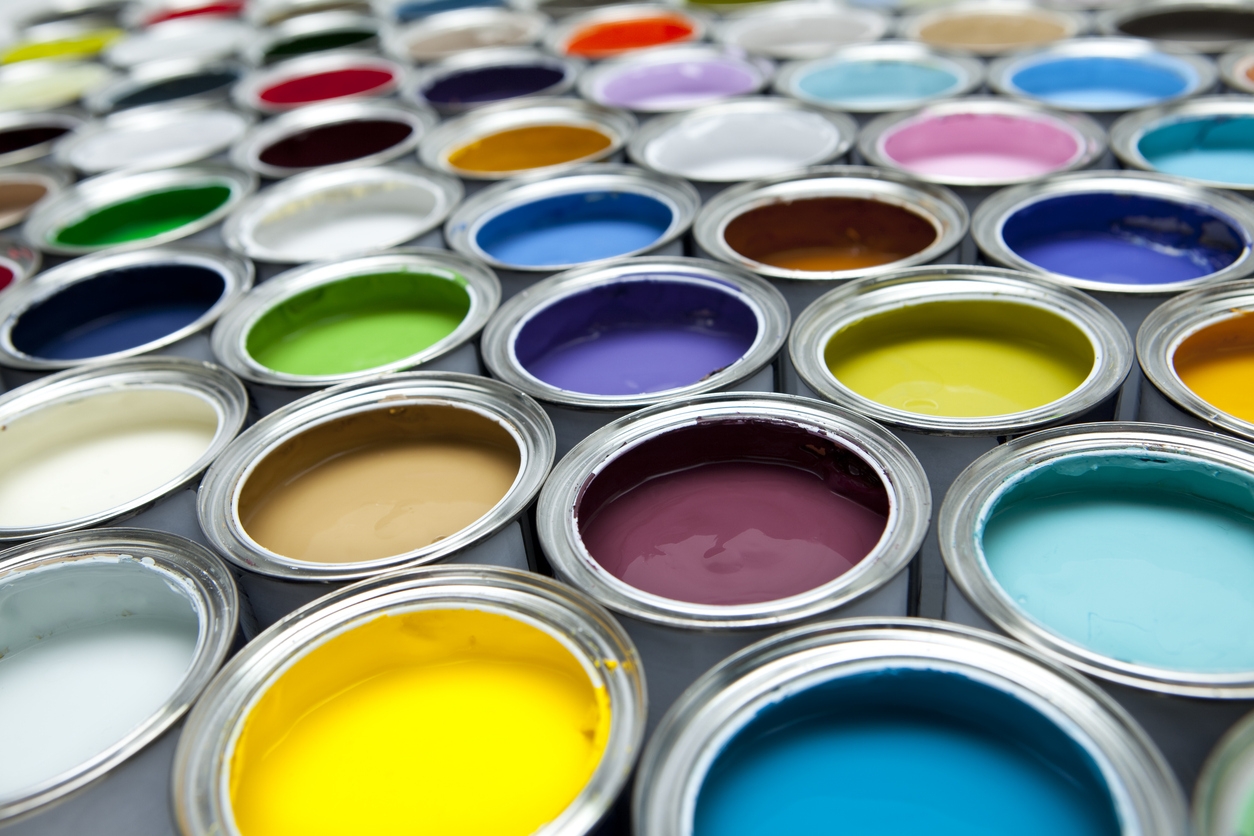Choosing the right paint for your home might seem simple, but it’s more than just picking a color you like. Paint is your home’s first line of defense against the elements and is crucial to its overall look and durability. In Danville, where the weather can be challenging, selecting the right type of paint is especially important. Whether refreshing a room or repainting your entire house, understanding the options available can save you time and money in the long run. Let’s explore how to make the best choice for your home.
Understanding Different Paint Types
When it comes to painting your home, not all paints are created equal. The key is knowing which type of paint is best suited for the job. Let’s break it down.
Interior vs. Exterior Paints
First off, you’ll need to choose between interior and exterior paints. It’s important to know that these two types aren’t interchangeable. Interior paints are formulated to handle the conditions inside your home—think about how they need to resist scuffs, stains, and general wear and tear. They come in various finishes, from matte to high gloss, giving you plenty of options for creating your desired look.
On the other hand, exterior paints are made to withstand the elements. Here in Danville, where the sun can be harsh, and the weather can fluctuate, you need paint that won’t fade or peel under UV rays or moisture. These paints are usually more durable and often include additives that protect against mildew and mold.
Oil-Based vs. Water-Based Paints
Oil-based paints were widely popular in the past due to their smooth finish and durability. However, these paints take longer to dry, have a strong odor, and require mineral spirits for cleanup. Because of their tough finish, they’re still a good choice for certain situations, like painting trim or high-traffic areas, but they’ve become less common.
Water-based paints, especially acrylic latex, have largely taken over the market. They dry quickly, are easier to clean up with just soap and water, and have low levels of volatile organic compounds (VOCs), making them more environmentally friendly. These paints are also flexible, which helps them resist cracking, making them a great option for both interior and exterior surfaces.
High-Quality Paint vs. Cheap Paint
One of the most important decisions you’ll make when choosing paint is whether to choose a high-quality option or something more budget-friendly. It might be tempting to save a few bucks by choosing the cheaper paint, but this can cost you more in the long run.
High-quality paints offer better coverage, so you’ll need fewer coats to achieve the desired look. They’re also more durable, which means they’ll stand up better to everyday wear and tear and are less likely to fade, crack, or peel over time. This durability means you won’t have to repaint as often, saving you money and time in the long run.
On the other hand, cheap paints might save you money upfront, but they often require more coats, are more prone to fading, and may not hold up as well over time. This means you could find yourself repainting sooner than you’d like, which can end up being more expensive in the end.
When it comes to choosing paint, it’s worth investing in a high-quality product from a reputable brand. Not only will it look better, but it will also last longer, making it a better value over time.
Factors to Consider When Choosing Paint
Picking the right paint isn’t just about the color; several factors can affect the longevity and appearance of your paint job, especially in a place like Danville. Let’s dive into some key considerations that will help you make the best decision.
Climate Considerations
Danville’s climate plays a huge role in determining the type of paint you should use. Our sunny days and occasional moisture can really put your paint to the test. For exterior paint, choosing one that offers protection against UV rays to prevent fading is crucial.
You’ll also want a paint that’s resistant to mildew and moisture, especially during those rainy seasons. By choosing a paint that’s specifically designed to withstand our local climate, you’ll ensure that your home stays looking fresh for years to come.
Surface Considerations
Not all surfaces are the same, and neither are the paints on them. Whether you’re painting wood, stucco, or metal, selecting a paint that adheres well to the surface and offers the necessary protection is important.
For example, wood expands and contracts with temperature changes, so you’ll need paint that can flex without cracking. On the other hand, Stucco is porous and requires a paint that can handle those small gaps and prevent moisture from seeping in. Metal surfaces might need a rust-inhibitive primer before painting to ensure a long-lasting finish. Knowing your surface type and choosing the right paint for it will save you from potential headaches down the road.
Specialty Paints and Additives
Sometimes, your home might have specific needs that require specialty paints or additives. For example, you might want to consider mold-resistant paint if you’re dealing with high-humidity areas like bathrooms or kitchens. These paints contain additives that actively prevent mold and mildew from growing, keeping your walls clean and safe.
Similarly, if you live in an area prone to wildfires, fire-resistant paints can offer an added layer of protection. These paints expand when exposed to high heat, creating a barrier that slows the spread of flames. Choosing the right specialty paints for your needs can add extra safety and durability to your home.
The Importance of Sheen and Finish
When choosing paint, one factor that’s often overlooked but incredibly important is the sheen, or finish. The sheen refers to how shiny the paint is once it’s dried, and it can have a big impact on the look and durability of your painted surfaces.
Sheen also affects how durable and washable your paint is. Here’s a quick breakdown of the most common sheens and where they work best:
- Flat/Matte: These paints have the least amount of shine and are great for hiding imperfections on walls. They’re perfect for low-traffic areas like living rooms and bedrooms because they don’t reflect much light, giving walls a smooth, soft look. However, they’re not very washable, so they’re not the best choice for areas that need frequent cleaning.
- Eggshell: A step up from flat, eggshell paint has a slight sheen that’s more durable and easier to clean. It’s a popular choice for living rooms, dining rooms, and hallways—places where you want a balance between a soft look and the ability to wipe down surfaces.
- Satin: Satin finishes have a bit more sheen and are even more durable and washable than eggshells. This makes them ideal for high-traffic areas like kitchens, bathrooms, and children’s rooms. Satin paint gives walls a subtle, lustrous finish that’s still easy to clean.
- Semi-Gloss: If you need something really durable and moisture-resistant, semi-gloss is the way to go. This finish is often used for trim, doors, and cabinets because it can withstand frequent cleaning and is resistant to moisture, making it a great choice for kitchens and bathrooms. The higher sheen also gives a crisp, clean look.
- Gloss: Gloss paint has the most shine and is the most durable of all the sheens. It’s perfect for areas that need to withstand heavy use, like railings, furniture, and cabinetry. Gloss finishes can also create a dramatic, high-impact look on walls, though they do highlight imperfections more than other finishes.
Beyond sheen, the overall quality of the finish matters a lot, too. High-quality paints, regardless of their sheen, tend to have richer pigments and better coverage, meaning you’ll likely need fewer coats. They also have better adhesion, meaning they’ll stick to surfaces longer without peeling or cracking.
A quality finish doesn’t just look good; it can also protect your walls from damage, moisture, and wear. For example, using high-quality semi-gloss in a bathroom can help prevent mildew and make it easier to clean up after steamy showers.
Ultimately, choosing the right sheen and ensuring you use a high-quality finish will enhance the beauty of your home and extend the life of your paint job. When in doubt, it’s always a good idea to consult with a professional, like those at Custom Painting, Inc., to help you make the best choice for your specific needs.
Conclusion
Choosing the right paint for your home is more than just a matter of aesthetics—it’s about protecting your investment and ensuring that your house looks great for years to come. By understanding the different types of paint, considering factors like climate and surface, and selecting the appropriate sheen and finish, you can make informed decisions that will result in a durable, beautiful paint job.
But even with the best paint and tools, painting can be daunting. That’s where professionals like Custom Painting, Inc. come in. We have the expertise to ensure that your home’s paint job is done right the first time, saving you time, stress, and potentially costly mistakes. Whether you need help choosing the right paint or want to leave the entire project in capable hands, Custom Painting, Inc. is ready to assist. Contact us today by calling 925-866-9610 or filling out our online form for a free estimate.



